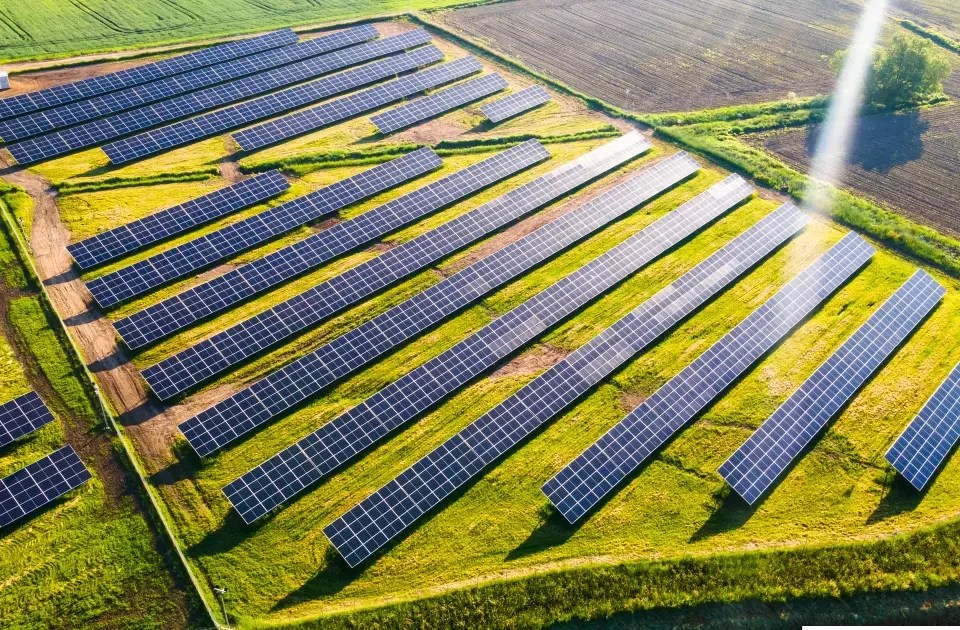In the quest for sustainable and renewable energy sources, wind power stands as a formidable contender. Utility-scale wind farms, with their towering turbines and sprawling arrays, are playing a crucial role in reducing our dependence on fossil fuels and mitigating climate change. These large-scale installations harness the kinetic energy of the wind to generate electricity on a massive scale, providing a viable and eco-friendly alternative to conventional power sources. Let’s delve into the role and future potential of utility-scale wind farms in the renewable energy landscape.
The Growth of Wind Energy
Wind energy has seen remarkable growth over the past few decades, driven by technological advancements, decreasing costs, and supportive government policies. According to the Global Wind Energy Council (GWEC), the world’s installed wind power capacity reached 743 GW by the end of 2020. This rapid expansion is a testament to the viability and scalability of wind power, particularly in regions with abundant wind resources.
Technological Advancements
The future of utility-scale wind farms is closely linked to ongoing technological innovations. Modern wind turbines are marvels of engineering, featuring advanced materials, aerodynamically optimized blade designs, and sophisticated control systems. Innovations such as floating offshore wind farms are opening up new possibilities for harnessing wind energy in deeper waters, where wind speeds are often higher and more consistent. Furthermore, improvements in grid integration and energy storage solutions are enhancing the reliability and stability of wind power, addressing concerns about its intermittency.
Economic Benefits
One of the most compelling aspects of utility-scale wind farms is their economic viability. The levelized cost of electricity (LCOE) for wind power has decreased significantly over the years, making it one of the most competitive sources of electricity. In many regions, wind power is now cheaper than coal or natural gas. This cost reduction is driven by economies of scale, advancements in turbine technology, and increased competition in the wind industry. As a result, utility-scale wind projects are attracting substantial investments and creating numerous job opportunities in the renewable energy sector.
Environmental Impact
Utility-scale wind farms offer numerous environmental benefits. They produce zero greenhouse gas emissions during operation, helping to reduce the carbon footprint of electricity generation. Additionally, wind farms have a relatively small land footprint compared to other forms of energy generation, and the land around turbines can often be used for agriculture or other purposes. While concerns about wildlife impacts, such as bird and bat collisions, exist, ongoing research and technological solutions are being developed to mitigate these effects.
Challenges and Solutions
Despite their many advantages, utility-scale wind farms face several challenges. Community opposition due to visual and noise impacts, land use conflicts, and grid integration issues are common hurdles. However, solutions such as community engagement programs, improved turbine siting practices, and advancements in transmission infrastructure are helping to address these challenges. Additionally, innovations in wind turbine recycling and repurposing are addressing concerns about the disposal of old or damaged turbines.
The Global Outlook
The global outlook for utility-scale wind farms is overwhelmingly positive. As countries set ambitious renewable energy targets, the demand for wind power is expected to soar. In the European Union, for example, wind power is projected to account for 50% of electricity demand by 2050. Similarly, in the United States, wind power capacity is expected to reach 300 GW by 2050, with a significant portion coming from offshore wind farms. The rapid growth of wind power in emerging markets, such as China and India, further underscores its global importance.
Conclusion
Utility-scale wind farms represent a vital component of the future energy landscape. With ongoing technological advancements, decreasing costs, and a growing commitment to sustainable development, these large-scale wind installations are poised to play a pivotal role in the global energy transition. As we look to the future, harnessing the power of the wind offers a promising pathway to a cleaner, greener, and more sustainable world.




